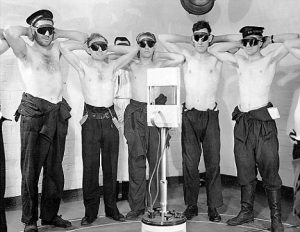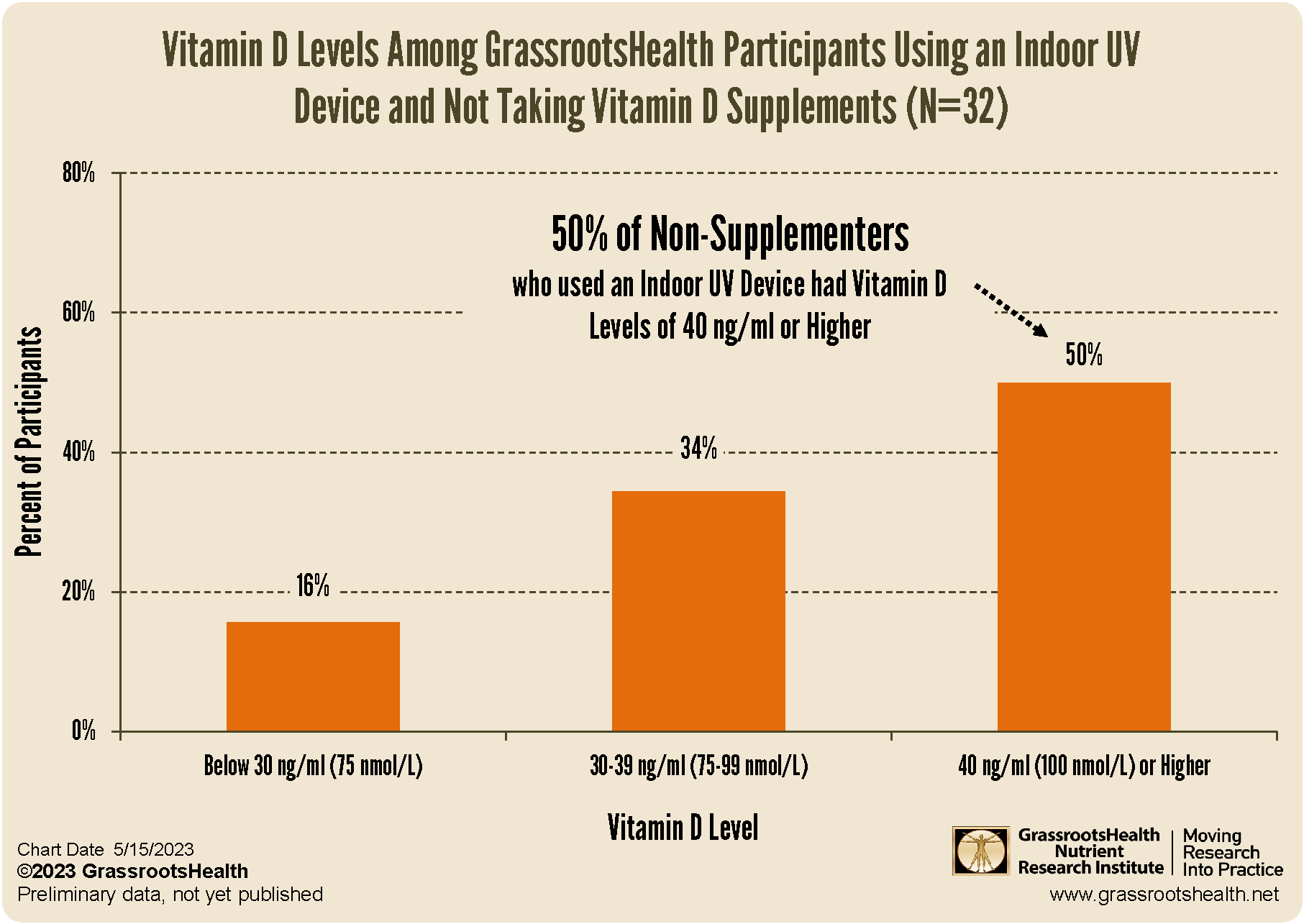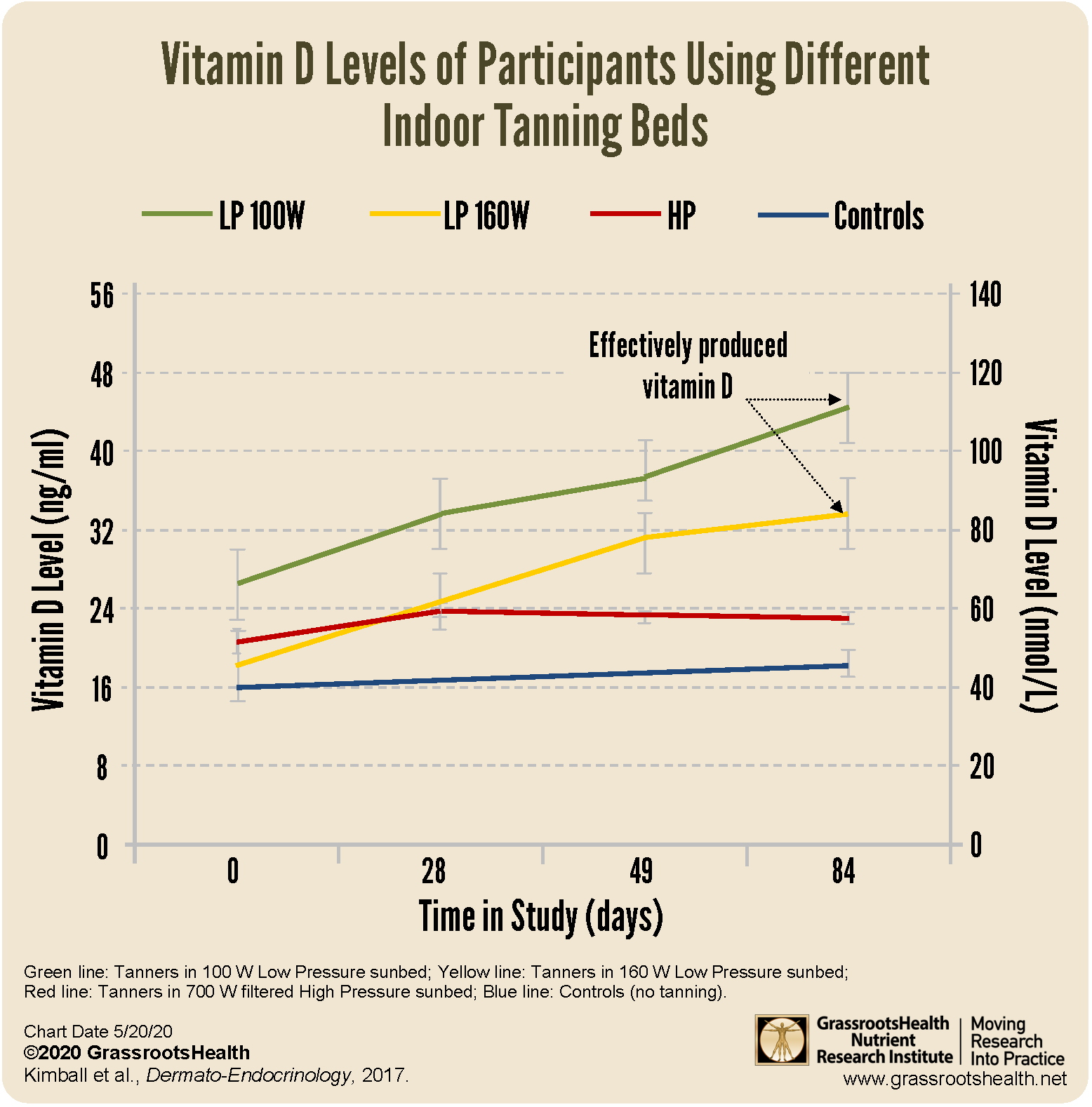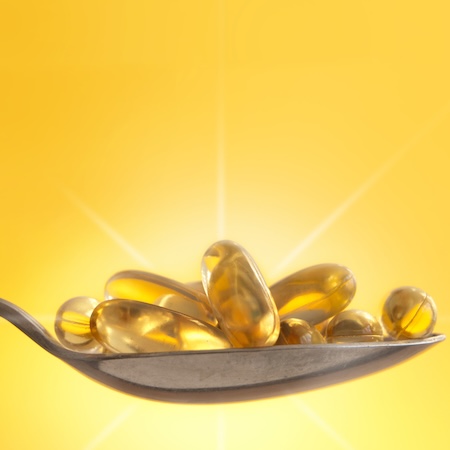Indoor UV devices have been used throughout history as effective health-promoting tools by providing a source of artificial sunlight in place of sunshine exposure
Key Points
- The use and effectiveness of indoor UV devices have been demonstrated throughout history; when natural sunlight was unavailable, artificial sunlight generated by indoor UV devices was successfully used to fill the gap and can still be a great alternative to make vitamin D and get the other health benefits normally received from sensible full spectrum sunlight exposure
- When considering a source of artificial UV light, it is important to be aware of the type of UV or light emitted by the device, its safety, and the physiological effects it may produce, especially in terms of vitamin D
- Studies support the use of artificially derived UVB light to raise vitamin D levels when the UV index of the sun is low, especially in the winter months of northern countries; it is important to note that tanning beds may not be recommended for individuals with skin types that always burn – see the guidelines provided below, stay safe, and don’t burn
Both natural and artificial sunlight from indoor UV devices, when used with diligence, can act as major interventional tools to help prevent and heal diseases related to a lack of sunshine and/or vitamin D deficiency. Its use and effectiveness have been demonstrated throughout history. In fact, before the ‘era of antibiotics,’ phototherapy was a state-of-the-art treatment in contemporary medicine, and when natural sunlight was unavailable, artificial sunlight generated by indoor UV devices was successfully used to fill the gap. Phototherapy is still used today to treat conditions such as eczema, psoriasis, jaundice, mood and sleep disorders, and some cancers – and, of course, vitamin D deficiency.
Indoor UV devices can provide a wide spectrum of sunshine health benefits from UVA, UVB, visible light, red light and infrared waves. They are a great alternative when sun exposure is not an option during the winter months, when UVB is not available to make vitamin D, or when we are simply not able to get outdoors to access the mid-day sun.
Choosing the Right Indoor UV Devices for Your Needs
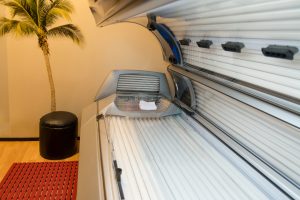 When considering a source of artificial UV light, it is important to be aware of the type of UV or light emitted by the device, its safety, and the physiological effects it may produce, especially in terms of vitamin D. Indoor sun and UVB lamps and bulbs are effective at helping to boost vitamin D production in the skin, however, some of these lamps may only offer UVB and no UVA exposure, so vitamin D may be produced but the full benefits of sunshine may not be achieved without exposure to the sun itself. However, since UVB rays may be the most difficult for some to obtain, using an indoor UVB option in addition to outdoor sunshine may be just the right fit. If outdoor sunshine in any amount is not an option, or if you are unable to get as much exposure to sunlight as you would like, choosing an indoor UV device that produces a wider spectrum of light and energy might be a better choice and could act as your ‘sunshine supplement.’
When considering a source of artificial UV light, it is important to be aware of the type of UV or light emitted by the device, its safety, and the physiological effects it may produce, especially in terms of vitamin D. Indoor sun and UVB lamps and bulbs are effective at helping to boost vitamin D production in the skin, however, some of these lamps may only offer UVB and no UVA exposure, so vitamin D may be produced but the full benefits of sunshine may not be achieved without exposure to the sun itself. However, since UVB rays may be the most difficult for some to obtain, using an indoor UVB option in addition to outdoor sunshine may be just the right fit. If outdoor sunshine in any amount is not an option, or if you are unable to get as much exposure to sunlight as you would like, choosing an indoor UV device that produces a wider spectrum of light and energy might be a better choice and could act as your ‘sunshine supplement.’
Can You Reach Target Vitamin D Levels Using Indoor UV Devices?
Most people do not get enough sunshine or UVB exposure to contribute much to vitamin D status, however, there are some people who spend extended time outdoors in the mid-day sun or regularly use UVB devices, and these vitamin D inputs do contribute significantly to vitamin D status.
According to GrassrootsHealth scientist panel member, Dr. Reinhold Vieth,
“Sunbeds and summer sunshine are effective means by which to increase our serum 25(OH)D levels. The advantage of a tanning bed is that exposure to UV light can be controlled more precisely than casual sun exposure and thus can be safer than advising the public to guess at their own sun exposure from sunlight.”
To study this concept further, in the summer of 2020, we updated the GrassrootsHealth D*action Lifestyle questionnaire to include more detailed questions about indoor UV devices used by asking those who indicated using UV equipment in the last 6 months about the type of device used, name of the device, how often it was used, and length of time per session.
A 2023 analysis of the data showed that 5% of the 9,711 participants who had answered the new set of questions indicated the use of indoor UV equipment in the previous 6 months. More than half of those participants had used a device that included UVB, with 43% having used a sunbed with UVA and UVB, and 24% having used a tabletop UVB device. Among the participants using an indoor UV device and not taking vitamin D supplements, 50% had a vitamin D level of 40 ng/ml (100 nmol/L) or higher, 34% had a vitamin D level between 30-39 ng/ml (75-99 nmol/L), and 16% had a vitamin D level below 30 ng/ml (75 nmol/L).
If you would like to contribute your UV, sunshine, and vitamin D data to this study, please enroll and order your vitamin D test kit today! Use the code SunMonth24 during the month of May, 2024 to get 10% off your test kit.
People who use tanning salons, specifically sunbeds that have UVB during the winter and following safe exposure guidelines, can reach physiological blood levels (>100 nmol/L or 40 ng/ml) of vitamin D without supplementation.
Dr. Samantha M. Kimball
Different Types of Indoor UVB Provide Different Vitamin D Results
A study by Kimball et al. on sunbeds and vitamin D in Canada found that individuals following standard sunbed tanning protocols in a typical tanning salon can achieve physiological levels of vitamin D when the sunbed emits UVB light in the range equivalent to outdoor summer sunshine, which most sunbed lamps do. More than 75% of all four study groups were considered vitamin D deficient (<30 ng/mL, or <75 nmol/L) at the start of the study, in the wintertime.
As shown in the chart above, vitamin D levels increased by an average of 17 ng/ml (42 nmol/L) in participants using sunbeds that used 100W and 160W fluorescent bulbs with 2.2% and 4.2% Vitamin D levels continued to increase after a base tan was achieved, all the way to the end of the 12-week study, with no adverse events or skin burns reported.
This study supports the use of artificially derived UVB light to raise serum vitamin D levels when the UV index of the sun is low, especially in the winter months of northern countries. It is important to note, as touched on in this short video “Understanding Sunbeds and Their Effect on Vitamin D,” that tanning beds may not be recommended for individuals with skin types that always burn.
Be Safe, Follow the Recommended Guidelines & Don’t Burn
If considering using indoor tanning options, such as sunbeds, do your research and be sure to follow safety guidelines, such as those set by Health Canada.
- Look for, read, and follow the warning and technical labels on the equipment. Labels tell you the recommended time you should be exposed each session (the time will vary, in part, depending on your skin type)
- Talk to the salon operator about your skin’s sensitivity and your ability to tan
- Do not go over the recommended time in a tanning session for your skin type
- Do not use tanning lamps more often than is prescribed for your particular skin type
- Always wear the safety eyewear that is recommended for the type of lamp you are using
- Allow at least 48 hours between each tanning session. This will give your skin a chance to repair some of the damage from the UV rays and may slow down the aging effects caused by the exposure
- Report any side effects (like sunburn or itchiness) to the salon operator. In cases of severe sunburn, see your health care provider
Be aware that certain medications and products may increase the sensitivity of the skin to UV exposure, such as some antidepressants, antibiotics, antihistamines, psoralens, antifungals, antidiabetic, oral contraceptives, tranquilizers, high blood pressure medications, and certain soaps or cosmetics. For a full list of medications and products, click here.
Practicing safe sun exposure is a natural way to increase your vitamin D levels. As reviewed above, studies have shown that you can also reach recommended vitamin D levels (>40 ng/ml or >100 nmol/L) using indoor UVB options and following time exposure guidelines for your skin type without adverse events. In fact, these options to raise vitamin D levels may even be preferred among individuals who may not respond as well to supplementation, such as those with digestive conditions or on certain medications that may inhibit absorption.
